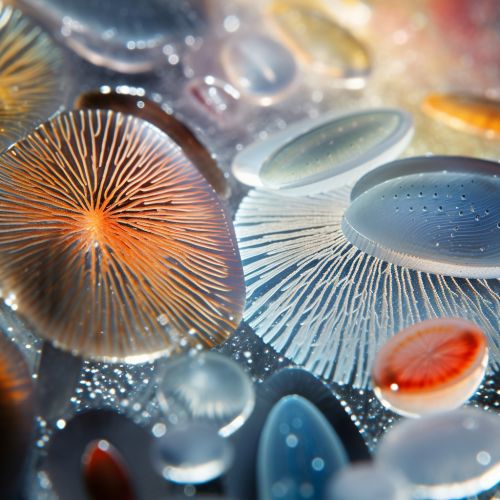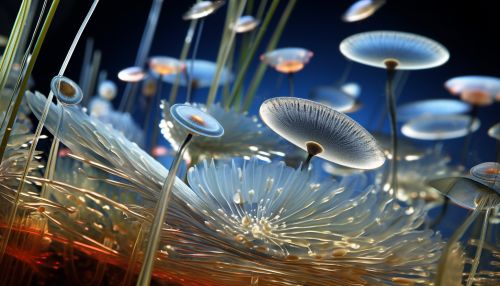The Chemistry of Biogenic Silica in Marine Ecosystems
Introduction
Biogenic silica (bSi), also known as biosilicification, is a critical component of marine ecosystems. It is a process where living organisms, primarily diatoms, radiolarians, and sponges, produce silica from silicic acid in the surrounding water. This silica, in turn, forms the structural basis for these organisms and plays a significant role in the global carbon cycle.


Biogenic Silica Production
The primary producers of biogenic silica in marine ecosystems are diatoms. Diatoms are a type of phytoplankton that have a unique, glass-like cell wall made of hydrated silica. This cell wall, known as a frustule, is highly resistant to degradation and can persist in the environment for thousands to millions of years.
Radiolarians and sponges also contribute to biogenic silica production. Radiolarians are single-celled protists that produce intricate mineral skeletons made of silica. Sponges, particularly those in the class Demospongiae, have a skeleton composed of silica spicules that provide structural support.
Role in the Carbon Cycle
Biogenic silica plays a crucial role in the marine carbon cycle, particularly in the process known as the biological pump. This process involves the transfer of carbon from the surface ocean to the deep ocean, primarily through the sinking of organic matter.
Diatoms, radiolarians, and sponges contribute to the biological pump by incorporating carbon into their silica structures. When these organisms die, their silica-based structures sink to the seafloor, effectively sequestering carbon in the deep ocean. This process is known as the silicate pump and is a significant component of the global carbon cycle.
Biogenic Silica Dissolution
The dissolution of biogenic silica in the ocean is a complex process that is influenced by several factors, including temperature, salinity, and the presence of organic matter. Dissolution occurs when biogenic silica comes into contact with undersaturated seawater, releasing silicic acid back into the water column.
The rate of dissolution is influenced by the specific surface area of the biogenic silica, with smaller particles dissolving more rapidly than larger ones. Additionally, the presence of organic matter can enhance dissolution by providing a source of nutrients for bacteria that can accelerate the dissolution process.
Implications for Climate Change
Changes in biogenic silica production and dissolution can have significant implications for climate change. Because biogenic silica plays a crucial role in the sequestration of carbon in the deep ocean, changes in the production and dissolution of biogenic silica can influence the amount of carbon that is removed from the atmosphere and stored in the ocean.
Increased production of biogenic silica, for example, could lead to increased carbon sequestration, potentially mitigating the effects of climate change. Conversely, increased dissolution of biogenic silica could lead to decreased carbon sequestration, potentially exacerbating the effects of climate change.
Conclusion
Understanding the chemistry of biogenic silica in marine ecosystems is critical for understanding the global carbon cycle and the potential impacts of climate change. Continued research in this area will provide valuable insights into the complex interactions between marine organisms, biogenic silica, and the global carbon cycle.
